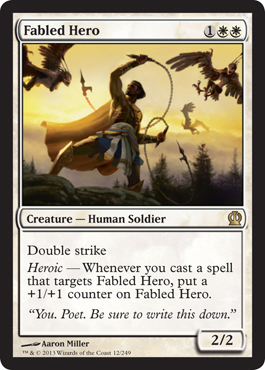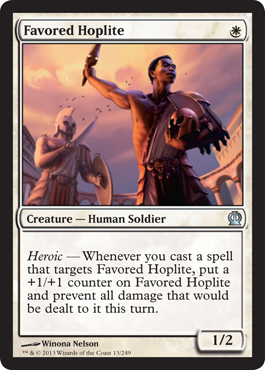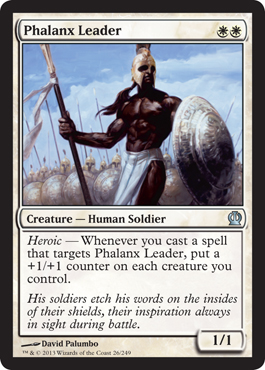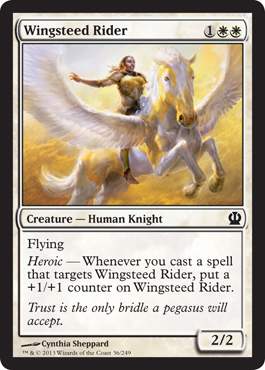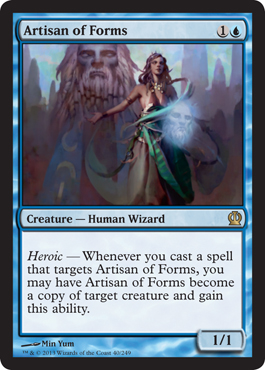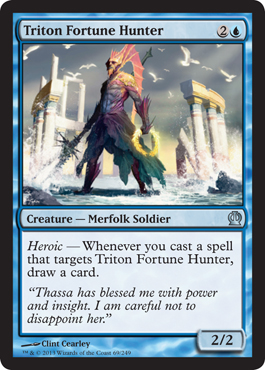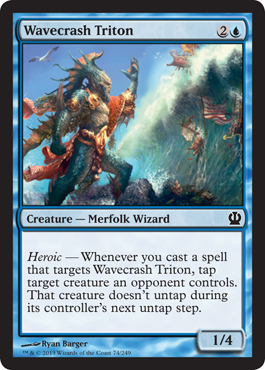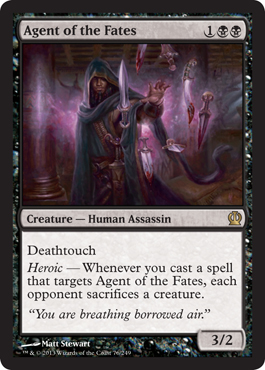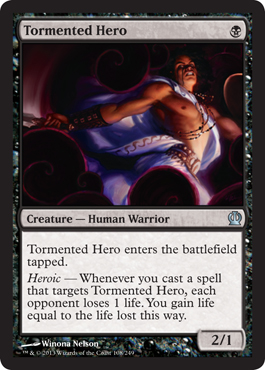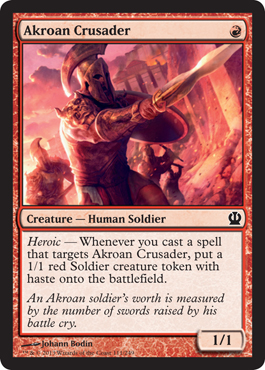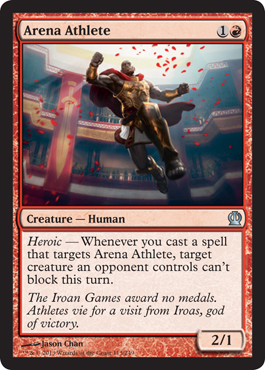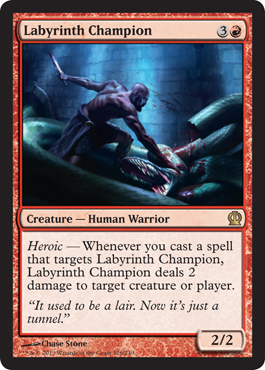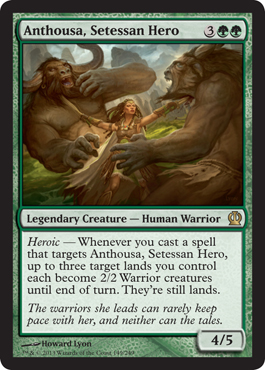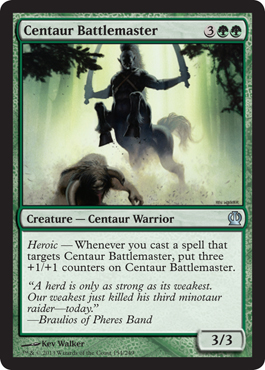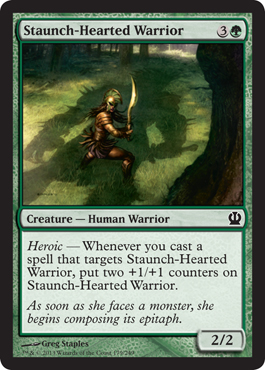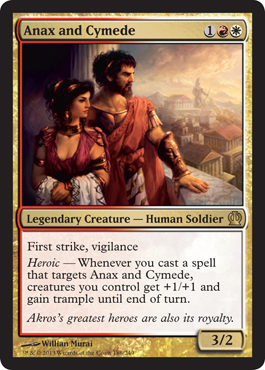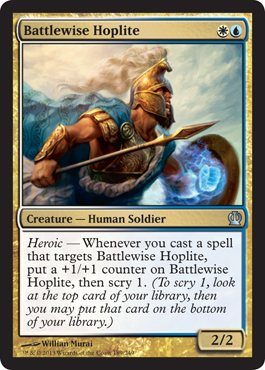By: CML
You ever do a Facebook search for an old schoolmate, find that they’re successful above and beyond their brains, and wonder, ‘Gee, I wonder how the hell he snagged her and the six-figure job?’ This often happens to Magic players — since ours is a hobby where there’s about as much opportunity for economic advancement as polo or luge — and it happens within the game itself, too. Who hasn’t thought to himself, when Googling bad cards, ‘Why is this terrible card worth more than my entire bank account?’ Usually the answer is EDH, a format based on the hypocrisy of pretending to not care much about ‘power,’ but today I’ll explore yet another underpowered format for durdly brewers: Modern. I’ll identify eight different price strata and roast the worst cards you can find at that price. Starting at the bottom:
$0-$1: Delver of Secrets
‘Remember that time I played a Delver t1 and I was going to win, except there’s no Wasteland or Daze to protect it and pressure their resources, and everyone’s playing a fair deck, so my counterspells sucked, and when I tried to flip it, I couldn’t for five turns in a row, because there’s no card selection, so I had a 1/1 for 1 that matched up poorly against his Lightning Bolts and Tarmogoyfs, so I lost with this deck, as I always do, but I continued to play it anyway because it’s a blue deck and BLUE DECKS CAN’T POSSIBLY BE BAD???’
(Honorable mention: Skullcrack, Tempest of Light / Back to Nature, Treasure Mage)
$1-$3: Serum Visions
In Magic writing, there are lies, damned lies, and Zac Hill on Serum Visions:
The only card that isn’t obviously absurd is Serum Visions, but I’ll go ahead and remind you that if you simply reverse the order of the abilities on the card, it’s good enough to get banned. Over the last three or so years, it has become more and more increasingly evident that Ponder / Preordain / Serum Visions / Sleight of Hand and their ilk are all just really, really powerful and only get better the more we play with them.
It’s not ‘obviously’ absurd — it’s just absurd to true connoisseurs of the game! Ah, MtG — if hipsters didn’t have Blue cantrips, what else could they feel superior about? In other news, it’s possibly correct to take p1p1 Fortify over Primeval Bounty, and Michael Olowokandi over Michael Jordan. (You say that’s wrong? You just don’t get it, man — mythic bombs are so mainstream these days.) Hey, Mr. Draper: you’ve quit the job, stop trying to sell me Mystic Snake Oil!
Moving away from corporate communiqués and back to reality, one’s experience with casting this ostensible Serum Visions ‘card’ is more like:
Needless to say, Serum Visions is so expensive because it’s bad. Ponder and Preordain are banned, and Serum Visions has crossed the picket line into playability; it commands the self-loathing, mercenary price-tag of a scab. But anyone who watched the start of the NFL last year knows what a dire price that really is …
(Honorable mention: Sleight of Hand, Valakut, the Molten Pinnacle)
$3-$5: Foil Past in Flames
Storm (not dead from the bannings, merely mutilated to the point of living in a leprosarium) is the kind of strategy that’s always powerful, and always way worse than it should be, because every meta ever is biased towards fair Blue decks, even when they’re bad (see: all the above cards), because that’s the way it had always been in Magic and, let’s face it, with all the old players owning all the Legacy cards, the only way to make a living from this game involving kissing up to WotC employees, and with WotC being way more preoccupied with the game not fizzling out like a fad than growing it beyond a nearly-saturated subculture, inertia and stagnation motivate MtG players way more than anyone would like to admit. Also: woe unto he who blingeth out his Storm deck.
$5-$10: Watery Grave
The other day my playgroup was trying to figure out which was worse: Plateau in Legacy, or Watery Grave in Modern? Though Plateau’s price has, so to speak, leveled off at a fairly high mesa, and has plenty of room to grow — you can Chain stuff to it, Chain Lightning off of it, etc. — Watery Grave just reminds me of “what happened to my weed when I was home from college for the summer and my parents started walking up to my bathroom.” Sadly, the card is too expensive to be used as toilet paper …
(Honorable mention: Scapeshift, Shadow of Doubt, Restoration Angel)
$10-$15: Aven Mindcensor
I like to play W/b Martyr in Modern, and its bad matchups these days are mainly decks that do degenerate stuff like searching their library for a whatever-card combo (MPod, KPod, RG Tron, Titan Scapeshift), so I proudly packed three Aven Mindcensors in my sideboard and thought that nothing bad could happen again. In theory, I ate a fetchland, forced a blind Pod activation, fizzled a Kiki-Pod combo, had them fail to find off Eye of Ugin activation after activation, and Ajani Vengeant-ed their lands when they tried to go for the kill. In practice, they killed my 2/1 and I lost a bunch of matches. (Quick aside: how the f does the stupid Scapeshift deck ALWAYS HAVE SCAPESHIFT???)
$15-$20: Sphinx’s Revelation
A ‘Standard-only’ mythic in playable guise, Sphinx’s mimics the MtG mindset by perpetuating itself at its best — what are you hoping to hit off a Revelation, but another Revelation? Then you can kill all their guys and gain a bunch of life and render whatever they’re doing irrelevant — interaction, sure, in the sense of Big Brother ‘interacting’ with Winston Smith through the telescreen. Good thing it’s 2013 and not 1984! Modern games tend to start on turn one and playing enough Revelations to chain them consistently is asking to get killed by the small child with Burn, so you can go off and complain to your friends about the misfortune when in fact you were just playing a worse deck than the guy with the Shard Volleys.
$20-$30: Glimpse the Unthinkable
The other day, I was playing my Martyr deck and lost to U/B Burn. ‘Lost to Burn with a lifegain deck, CML?’ you might ask. ‘How did that happen?’ Because they went after my library, and not my life! It was basically like the Scopes Monkey trial, I guess — and with a similar outcome: the secularist was Martyred. The deck might very well be good, but I just put this card on here as a jibe at EDH players and casuals because I’m pretentious like that.
$30+: Chord of Calling
Paying $35 for this card would be like paying $120 million over six years for a mediocre quarterback, when the only reason anyone else has ever heard of your city is from watching The Wire. Good thing nobody in sports is dumb enough to do that! And if you thought $35 for Chord was a ripoff, check out its mana cost …
Thanks for reading!
CML
Discuss this article in our forums.

